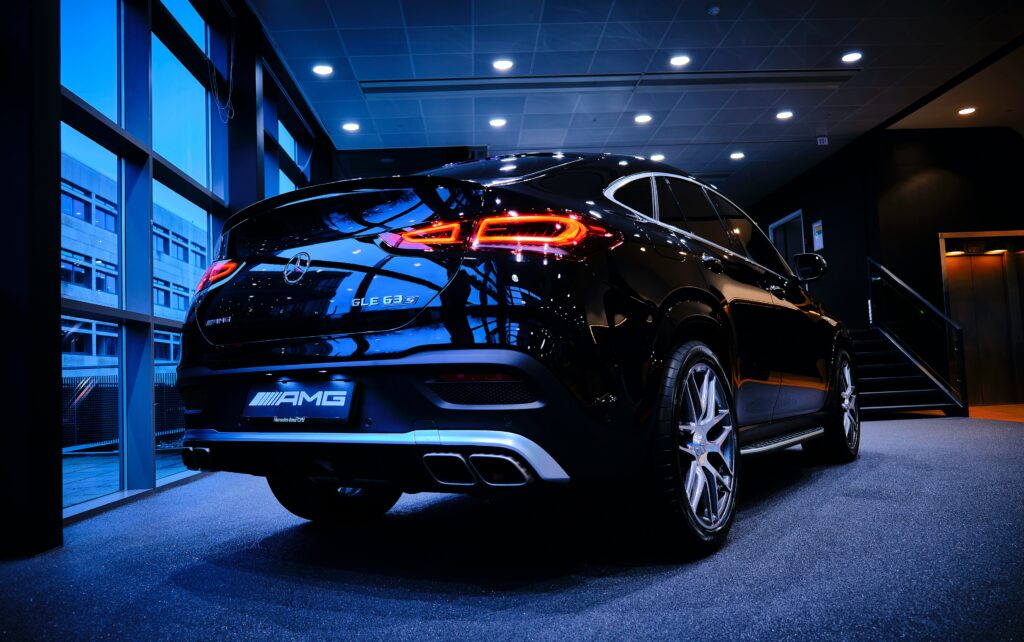Talk to Sales: (401) 200-6026

A Brief History of Car Dealerships
Starting as far back as the 1880’s car dealerships pushed for innovations in selling and increasing profits. Customers today can hop online and look at their options from their beds; naturally, this means physical dealerships must make themselves more attractive to their customers. A car dealership can do that by paying attention to new technology and trends. Dealerships must engage with trends because those who don’t risk a huge loss of profits to their online competitors. Below are 7 car dealership trends that dealers must follow in 2023.
7 Lastest Car Dealership Trends
1. AR/VR Experience Availability
Now is the time if you’ve not hopped onto the virtual reality (VR) bus. For the uninitiated, VR allows people to have digital experiences without leaving their homes. They can explore models in a virtual showroom, and many of these experiences also offer VR driving simulations. When Audi implemented their VR experience in 2015, they saw a dramatic bump in car sales—between 60-70%. Traditional car dealerships should, in due course, consider implementing VR opportunities for their prospective customers.
2. Enhance Online Presence
Selling experiences now begin before the customer ever enters the lot; even Mom-and-Pop shops need to think about their online presence. Above-average experiences make for more profit, beginning with the dealership website. Ensuring your website delivers a friendly user interface and adaptable device assets are bottom-of-the-barrel expectations. Online shoppers are also looking for secure eCommerce portals and site-wide security measures. The best of these websites also promotes rich content covering multiple industry topics ranging from information about fender benders to the latest car reviews and trends, informing their customers and delivering an end-to-end holistic experience.
3. Focus on Sustainable Vehicles
The future of vehicles is renewable energy, made of extruded, recycled material, and driven with high-tech safety features. In 2021 alone, there were 15.5 million vehicles sold in the United States—only a fraction of which are directly renewable. Car dealerships looking to have a lasting company model must seriously consider the cars they offer to the public. The average person looking to buy a car is looking for something that fits their needs and doesn’t actively damage the local environment. Not only that—looking into sustainable cars means cars with longer life spans, too.
4. Keep Up with New Regulations
In the last year, there have been a lot of federal regulatory changes for the automotive industry; these changes have affected finance, insurance, and lending practices for all automotive sales options. Dealers must stay updated on local and national regulations. Otherwise, they may run into legal battles. All owners should be well versed in the legal aspects of their business; it sets them up for being on the right side of the law. Staying up to date also puts the owner in a better position to promote and prove transparency to their customers.
5. High Tech Showroom
Originally, showrooms were meant to showcase the newest or best-featured cars for some time; nowadays, it takes more than bright balloons and wacky figures to get people to walk inside a dealership. A high-tech showroom can help entice prospective customers into making a purchase. Physical showrooms must aim for their accessibility and technology to rival dealerships with VR showrooms; the way to do this is by leaning on market and design professionals.

Sell cars on the lot faster with AutoRaptor
Know if we’re the right fit within 10 minutes
6. Multi-channel Marketing
Marketing and design professionals have other tricks they can use to assist a dealership too. For example, by implementing a multi-channel marketing approach, dealers can entice many more customers than they would otherwise. Less than 15% of online brands run coordinated multi-channel marketing; the rest run omnichannel marketing, focusing on one or two social media markets. Apart from omnichannel marketing drastically limiting the potential customers for a dealership—Omni also lowers the “status” of the dealership. Much like how a poorly run website lowers prospective profit, so does a limited marketing campaign.
7. Data-Driven Salespeople
Utilizing data to navigate logistics, measure standards, and ensure high performance are just some aspects to consider. Highly knowledgeable employees are priceless here, as in a moment, they can report analytics or problems; they can also save a customer’s information for easy and fast transactions (and further marketing) later. Then on the manager’s side, data shows projections and potential for new growth. No matter what area of the dealership the employee works in, keep them up to date with the industry’s newest tech. It will assist them in closing the sale and increasing profit.
Keep Up-to-Date with the Latest Car Dealership Trends
More than half of those looking to buy a car complete the process online; subsequently, physical, old-school car dealerships must consider taking steps to draw in and result in more customers. Buying cars from home is ideal for many—it’s on the dealership to provide more than a car for cash.
Subscribe to our Newsletter
Resources to help your dealership convert more leads into sales, retain more customers, and market inventory smarter, straight to your inbox every Sunday.
About the Author: Patrick Peterson is a content manager at GoodCar. Born and raised in the automotive world. He’s an enthusiastic expert who writes exquisite content pieces about everything regarding cars and bikes.




